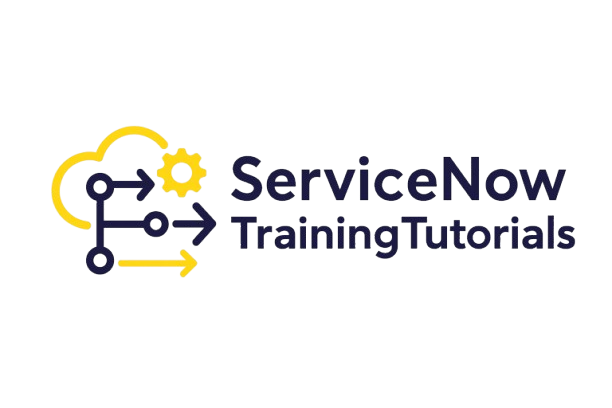1) IT Service Management (ITSM): Your Foundation Layer
What it is:
ITSM standardizes how IT handles incidents, requests, problems, and changes. Think of it as the operational heartbeat of many ServiceNow instances.
Why beginners should learn it:
Most organizations start their journey with ITSM; it’s the most common entry point.
It teaches platform essentials: forms, lists, tables, SLAs, notifications, and approvals.
You’ll practice real developer tasks—UI Policies, Business Rules, Flows, and Catalog Items.
Hands-on skills to practice during ServiceNow ITSM training:
Build an Incident form variation with a UI Policy that reveals extra fields for “P1” tickets.
Create a Request Item (RITM) with a Flow Designer workflow, approvals, and SLA.
Write a simple Script Include to calculate breach warnings.
Beginner takeaway:
Mastering ITSM gives you the essential platform muscle memory—lists, forms, data, and automation—that every ServiceNow developer relies on.
2) HR Service Delivery (HRSD): Employee Journeys & Sensitive Data:
What it is:
HRSD streamlines HR services such as onboarding, benefits, payroll queries, and case management, with strict data separation for confidentiality.
Why beginners should learn it:
You’ll learn case lifecycles outside of IT, reinforcing reusable design patterns.
You’ll practice Employee Center configurations and topic categories for self-service.
You’ll understand role-based access and securing sensitive fields, a crucial skill for developers.
Hands-on skills to practice during ServiceNow HRSD training:
Configure an HR Case type for “Remote Onboarding” with tasks for IT, Facilities, and HR.
Use Document Management to generate an offer letter from a template.
Build an HR-only knowledge base and route articles to Employee Center.
Beginner takeaway:
HRSD expands your developer mindset beyond IT, teaching secure design, employee experience, and cross-department orchestration.
3) Customer Service Management (CSM): Omni-Channel Support & Entitlements
What it is:
CSM handles external customer cases, product models, entitlements, SLAs, and integrations with channels like email, chat, and portals.
Why beginners should learn it:
Real-world businesses depend on case deflection via knowledge, communities, and virtual agents.
You’ll learn data models for accounts, contacts, and products—great for integrations.
You’ll practice assignment workbench, playbooks, and entitlement logic.
Hands-on skills to practice during ServiceNow CSM training:
Create an Entitlement for “Premium Support” with a 1-hour response SLA.
Configure a Case Playbook for “Product Defect” with guided tasks and escalations.
Build a Customer Portal widget to surface context-aware knowledge.
Beginner takeaway:
CSM turns you into a customer-experience problem-solver—combining data modeling, SLAs, and portals to reduce case volume and boost satisfaction.
4) Configuration Management Database (CMDB): The Source of Truth
What it is:
CMDB stores configuration items (CIs) and their relationships—servers, apps, services—and underpins impact, change, and compliance decisions.
Why beginners should learn it:
Almost every module references the CMDB for impact and root cause analysis.
Understanding data quality, reconciliation, and relationships is vital for accurate reports.
You’ll learn Discovery and Service Mapping concepts that frequently appear in projects.
Hands-on skills to practice as part of ServiceNow Developer Training:
Create a new CI class (if needed) with correct inheritance and attributes.
Use Identification & Reconciliation rules to avoid duplicate CIs.
Build a Dependency View to show how an application depends on underlying servers.
Beginner takeaway:
A clean CMDB powers trustworthy automation. Learn it early and your apps, flows, and reports will be far more reliable.
5) Service Catalog & Flow Designer: From Request to Orchestration
What it is:
Service Catalog provides a user-friendly way to request services; Flow Designer (and, where relevant, Orchestration/Integration Hub) automates fulfillment across systems.
Why beginners should learn it:
It’s where developers turn business requirements into visible, testable outcomes.
You’ll practice form design, catalog client scripts, and server-side logic.
You’ll learn integrations (e.g., create an AD account, send a DocuSign envelope) with Integration Hub spokes.
Hands-on skills to practice during ServiceNow Developer Training:
Build a “New Laptop” catalog item with variables, validations, and approvals.
Use Flow Designer to automate task assignments and notifications.
Add an Integration Hub spoke step (e.g., Slack or Microsoft Teams) for status updates.
Beginner takeaway:
Catalog + Flow Designer is where your development work becomes tangible for end users—perfect for building a strong portfolio of demos.
How These Modules Fit Into Your ServiceNow Developer Training Plan
Start with ITSM: Learn lists, forms, tables, SLAs, business rules, and flows.
Add Catalog + Flow Designer: Turn requirements into automated services quickly.
Layer in CMDB: Build dependable data foundations for accurate impact and reporting.
Explore HRSD: Practice secure design and employee-facing experiences.
Tackle CSM: Learn external customer workflows, entitlements, and portals.
This progression mirrors real implementations and aligns with ServiceNow ITSM training, ServiceNow HRSD training, and ServiceNow CSM training, all under the broader umbrella of your ServiceNow Developer Training path.
Practical Project Ideas (Great for Portfolios)
ITSM + Catalog: “VIP Incident Fast-Track” with priority-based UI Policies and a one-click escalation flow.
HRSD: “Day-1 Onboarding Pack” that triggers device provisioning, building access, and benefits docs.
CSM: “Product Defect Playbook” with entitlement checks and knowledge deflection metrics.
CMDB: “App Dependency Map” showcasing how outage risk cascades through services.
Integration Hub: “Notify in Teams” step whenever a P1 incident is created.
Common Mistakes Beginners Should Avoid
Common Mistakes Beginners Should Avoid
Ignoring data models: Skipping table relationships leads to broken reports and clumsy automation.
Hard-coding values: Use System Properties, Choices, and Dictionaries to stay flexible.
Over-scripting too early: Prefer Flow Designer where possible; add scripts only when needed.
Neglecting access controls: Especially in HRSD, lock down sensitive data with ACLs.
Skipping documentation: Document variables, flows, and business rules as you build.
Conclusion:
If you’re serious about ServiceNow Developer Training, start with these five modules: ITSM, HRSD, CSM, CMDB, and Service Catalog + Flow Designer. They form a practical, job-ready foundation that carries across industries and use cases. Pair module practice with real mini-projects, and you’ll move from “beginner” to “billable” fast.
